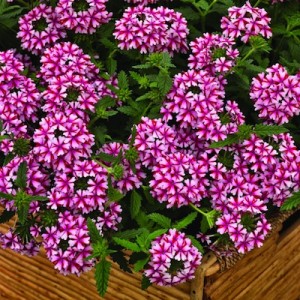
Iron butterfly ironweed. (C) Jo Ellen Meyers Sharp
We see ironweed growing along country roads, where its beautiful bluish-purple flowers compliment perfectly the yellow blossoms of goldenrods this time of year.
A few years ago, Allan Armitage, the perennial plant-breeding guru who retired recently from the University of Georgia, introduced ‘Iron Butterfly’, a garden-worthy cousin of the late-season, roadside bloomer.
This is the first year that ‘Iron Butterfly’ ironweed (Vernonia lettermannii) has bloomed here, probably because until last spring, it was shrouded by a much larger false sunflower, ‘Sunshine Daydream’ (Helianthus x multiflorus), which didn’t know how to contain itself.
‘Iron Butterfly’ calls to its winged namesakes as they sustain themselves late in the season and as they migrate from here to their winter home.
This cultivar of a native species has finely textured foliage along stems topped with tufts of purple-blue flowers. ‘Iron Butterfly’ gets about 3 feet tall and wide.
Grow ironweed in full sun and average soil. It is quite drought tolerant, yet can withstand an occasional surface flooding, but sopping wet, poorly drained soil would not be good. Cut a few of the blooms for indoor enjoyment. It is winter hardy throughout Indiana.
American Garden Award Winners

Verbena Lanai Candy Cane. Photo courtesy americangardenaward.com
Verbena Lanai Candy Cane received the most votes from the public in the 2013 American Garden Award. This was the favorite plant of Master Gardener volunteer Thomas Graham, who tends the American Garden Award planting outside the Garfield Park Arts Center. Second place went to Zahara Cherry Zinnia and third (my favorite) was SunPatiens Compact Electric Orange Impatiens.
2013 Drought
Rain has been sparse since July and more than likely, the landscape is dry.
We can allow the perennials and annuals to go the way of the season. But it would be wise to water evergreens, trees and shrubs throughout fall until the ground freezes. These plants should be well hydrated as the season changes and temperatures drop.
Many larger plants are already stressed from last year’s brutal drought and excessively hot temperatures. The rains this spring and early summer pushed fast new growth, which drains a plant’s reserves. Newly planted trees and shrubs also are at risk. Most plants need at least 1 inch of water a week. An inch is roughly 15 gallons of water.